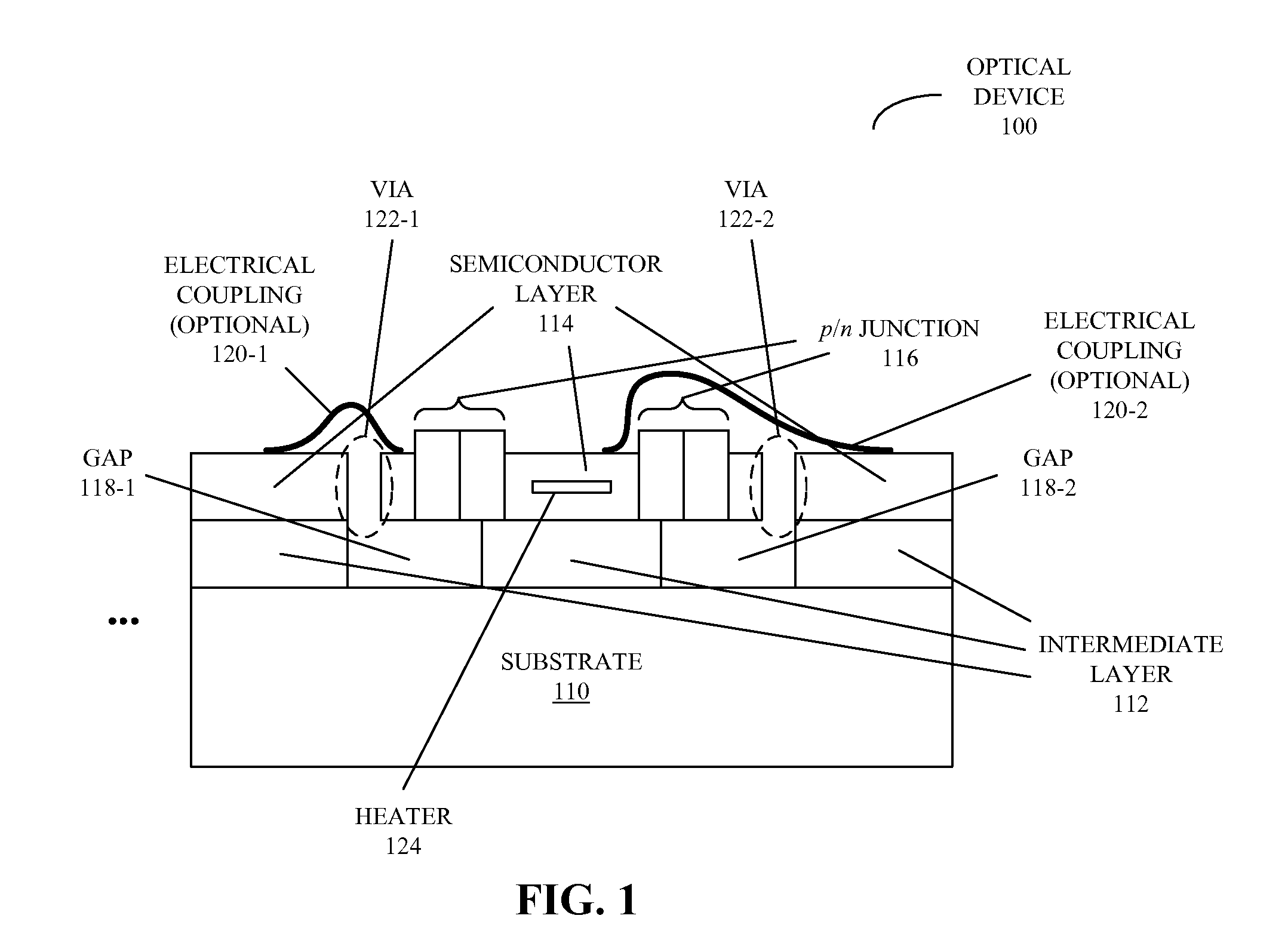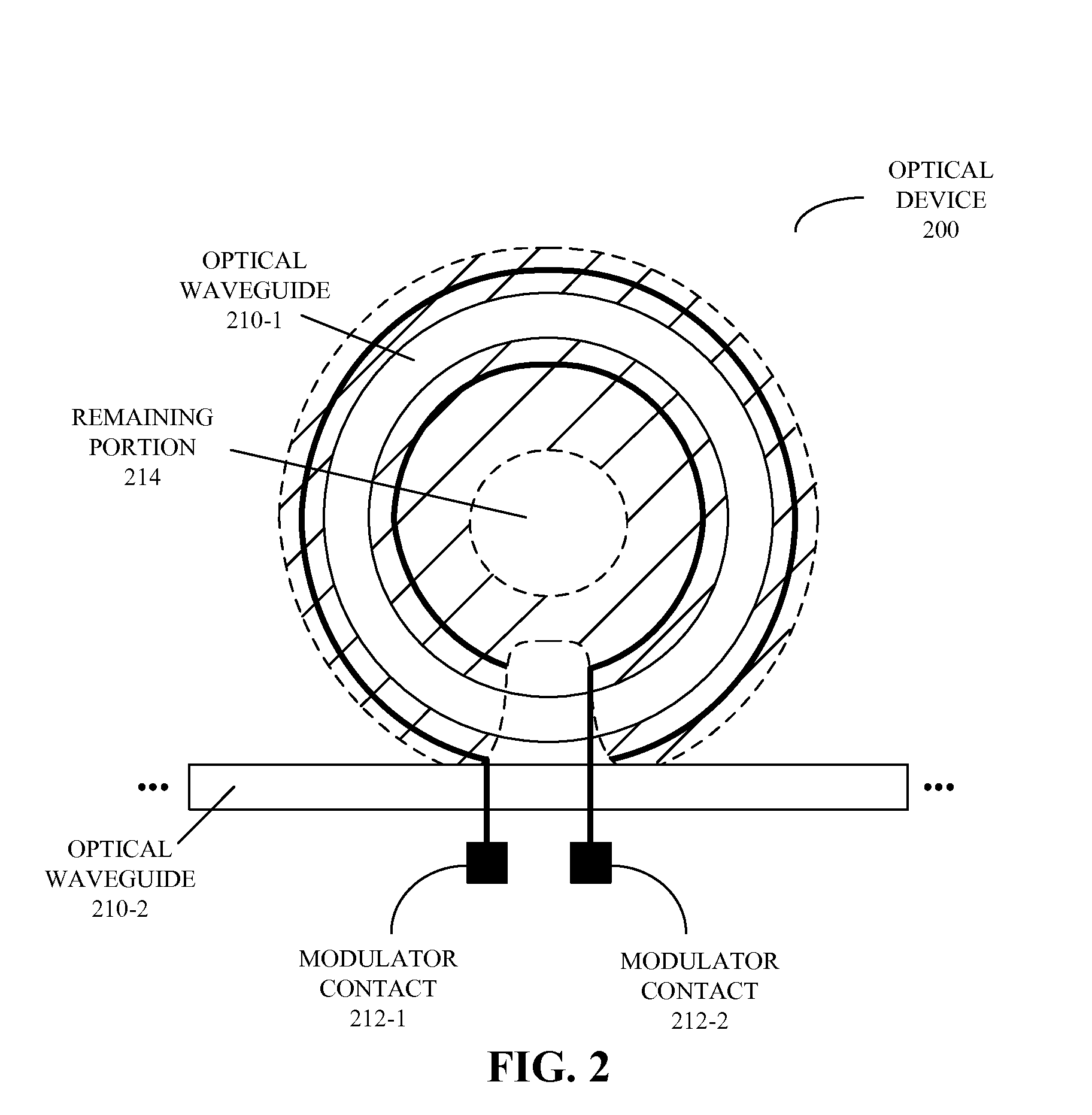Thermal tuning of an optical device
a technology of optical waveguide and thermal tuning, which is applied in the direction of optical waveguide light guide, instruments, optics, etc., can solve the problems of degrading the quality factor of an optical resonator, introducing additional optical losses, and affecting the so as to facilitate thermal tuning of optical waveguides and reduce optical waveguide losses. , the effect of reducing optical waveguide losses
- Summary
- Abstract
- Description
- Claims
- Application Information
AI Technical Summary
Benefits of technology
Problems solved by technology
Method used
Image
Examples
Embodiment Construction
[0033]The following description is presented to enable any person skilled in the art to make and use the invention, and is provided in the context of a particular application and its requirements. Various modifications to the disclosed embodiments will be readily apparent to those skilled in the art, and the general principles defined herein may be applied to other embodiments and applications without departing from the spirit and scope of the present invention. Thus, the present invention is not intended to be limited to the embodiments shown, but is to be accorded the widest scope consistent with the principles and features disclosed herein.
[0034]Embodiments of an optical device, an array of optical devices, and a technique for fabricating the optical device or the array are described. This optical device is implemented on a substrate (such as silicon), and includes a thermally tunable optical waveguide with a high thermal resistance to the surrounding external environment and a l...
PUM
 Login to View More
Login to View More Abstract
Description
Claims
Application Information
 Login to View More
Login to View More - R&D
- Intellectual Property
- Life Sciences
- Materials
- Tech Scout
- Unparalleled Data Quality
- Higher Quality Content
- 60% Fewer Hallucinations
Browse by: Latest US Patents, China's latest patents, Technical Efficacy Thesaurus, Application Domain, Technology Topic, Popular Technical Reports.
© 2025 PatSnap. All rights reserved.Legal|Privacy policy|Modern Slavery Act Transparency Statement|Sitemap|About US| Contact US: help@patsnap.com



